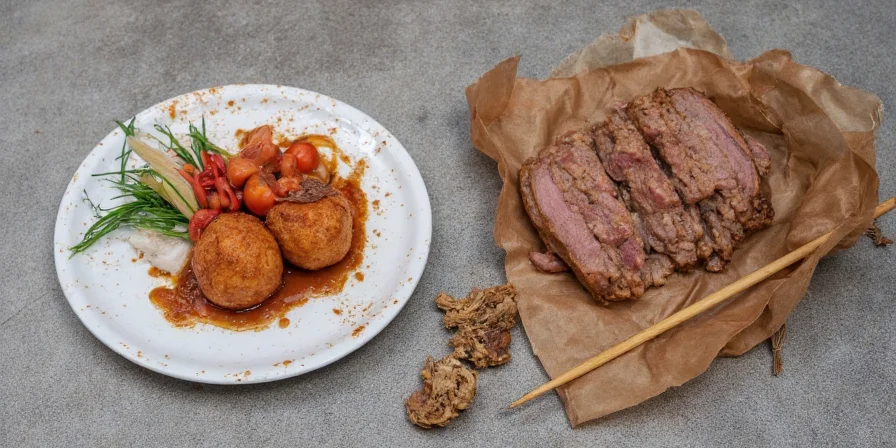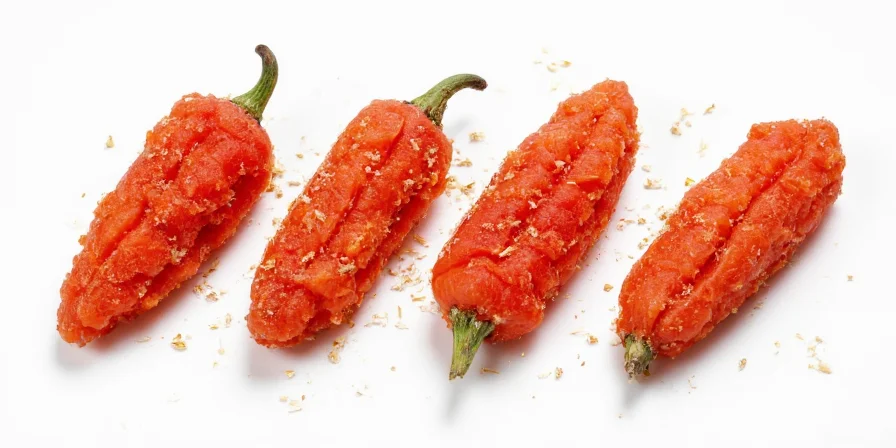How long to slow cook ribs? For perfect results: slow cooker ribs need 6-8 hours on low setting, oven-baked ribs require 3-4 hours at 275°F, and smoked ribs take 4-5 hours at 225°F. This complete guide gives you precise timing for every cooking method, plus practical doneness tests and common mistakes to avoid - so you get tender, flavorful ribs every time without overcooking.
Table of Contents
- Why Slow Cooking Ribs Works Best
- Exact Timing for Perfect Slow Cooked Ribs
- How to Tell When Ribs Are Done (Without a Timer)
- Common Mistakes That Ruin Slow Cooked Ribs
- Spice Storage Tips for Maximum Flavor
- Pro Tips for Better Ribs Every Time
- Best Spice Combinations for Different Rib Styles
- Frequently Asked Questions
Why Slow Cooking Ribs Works Best
Slow cooking transforms tough ribs into tender, flavorful meals through gentle heat that breaks down connective tissue without drying out the meat. Unlike high-heat methods that burn off flavor compounds, low temperatures allow spices to fully integrate while collagen gradually converts to gelatin - creating that perfect "fall-off-the-bone" texture home cooks love.
Historical Evolution of Rib Cooking Methods
Understanding the progression of techniques explains modern precision:
| Era | Primary Method | Temperature Range | Typical Duration |
|---|---|---|---|
| Pre-1900s | Open-pit fire | 300-400°F (uncontrolled) | 2-4 hours |
| 1920s-1950s | Brick smokers | 200-225°F | 8-12 hours |
| 1970s-1990s | Slow cookers | 190-200°F (low setting) | 8-10 hours |
| 2000s-Present | Digital precision smokers | 225±5°F (regulated) | 4-6 hours |
Source: Texas A&M Barbecue Project, Barbecue History Timeline

What Makes Slow Cooking Different
Low temperatures (between 200-275°F) work slowly to break down tough connective tissues without causing the meat to lose moisture. This gradual process creates more tender ribs than faster cooking methods. The key is maintaining consistent temperature - too low and the ribs won't tenderize properly, too high and they'll dry out before becoming tender.
Exact Timing for Perfect Slow Cooked Ribs
Timing varies by cooking method and rib type. Use this guide for consistently tender results:
| Cooking Method | Temperature | Timing | Best For |
|---|---|---|---|
| Slow Cooker | Low (190-200°F) | 6-8 hours | Baby back ribs |
| Slow Cooker | Low (190-200°F) | 8-10 hours | Spare ribs |
| Oven | 275°F | 3-4 hours | All rib types |
| Smoker | 225°F | 4-5 hours | Traditional BBQ flavor |

Contextual Factors Affecting Cooking Time
These guidelines assume standard conditions (3-4 lb racks at sea level). Adjust for these verified variables:
- Altitude impact: Above 3,000 feet, increase time by 15-20% due to lower boiling points (source: CSU Extension)
- Rack thickness: 2"+ thick cuts require +1 hour; consult USDA guidelines for meat density adjustments
- Cooker variance: Older slow cookers may fluctuate ±25°F - always verify with independent thermometer
- Starting temperature: Refrigerated ribs add 45-60 minutes vs. room-temperature meat
The Critical Timing Window
6-8 hours is the sweet spot for most slow cooker ribs. Less than 6 hours leaves ribs tough; beyond 8 hours causes them to become mushy. For oven cooking, don't exceed 4 hours or the meat will lose structure. The best test? Twist a rib bone - it should pull away with slight resistance but not break off completely.
How to Tell When Ribs Are Done (Without a Timer)
Timing guides help, but actual doneness depends on your specific ribs and equipment. Use these reliable visual and physical tests:

3 Foolproof Doneness Tests
- The Bend Test: Hold ribs with tongs in the middle - they should bend freely and cracks may appear in the bark
- The Pull Test: Gently pull on a bone - it should separate slightly from the meat but require some resistance
- The Meat Retraction: Meat should have pulled back about 1/2 inch from the ends of the bones
Common Mistakes That Ruin Slow Cooked Ribs
Avoid these frequent errors that turn promising ribs into disappointing meals:
- Adding liquid at the beginning - dilutes surface flavors; wait until the 3-4 hour mark
- Not removing the membrane - blocks spice penetration and causes uneven cooking
- Overcooking baby backs - they need 2 hours less than spare ribs
- Applying sauce too early - sugars burn below 265°F; add in the last 30 minutes
- Slicing immediately - rest for 15 minutes to retain juices
Spice Storage Tips for Maximum Flavor
Fresh spices make the biggest difference in flavor. Follow these simple storage practices:

Maximize Spice Freshness
| Do | Don't |
|---|---|
| Store in airtight containers away from heat | Keep near stove or oven |
| Buy whole spices and grind as needed | Use ground spices older than 6 months |
| Label containers with purchase dates | Leave jars open after use |
Quick Spice Refresh
Revive older spices by spreading on a baking sheet and heating in a 300°F oven for 1-2 minutes. This reactivates essential oils without burning them.
Pro Tips for Better Ribs Every Time
These tested techniques guarantee better results:

- Dry brine overnight: Salt 12 hours before cooking for deeper flavor and better moisture retention
- Wrap after 3 hours: Aluminum foil with 2 tbsp liquid creates steam that speeds tenderizing
- Use the 3-2-1 method: 3 hours uncovered, 2 hours wrapped, 1 hour sauced for balanced texture
- Trim excess fat: Thick fat caps won't render properly in slow cooking
- Rest before serving: 15-minute rest allows juices to redistribute
Best Spice Combinations for Different Rib Styles
Match your spice rub to your preferred flavor profile:
| Rib Style | Spice Blend | Taste Profile |
|---|---|---|
| Texas-Style | Salt, coarse black pepper, garlic powder, cumin | Peppery, earthy, bold |
| Kansas City | Brown sugar, smoked paprika, onion powder, mustard powder | Sweet, smoky, tangy |
| Carolina-Style | Vinegar, crushed red pepper, salt, celery seed | Zesty, spicy, bright |
| Asian-Inspired | Five-spice powder, ginger, garlic, soy sauce, sesame oil | Umami, aromatic, slightly sweet |

Frequently Asked Questions
How long should I slow cook ribs on low?
For slow cooker ribs, 6-8 hours on low is ideal for baby back ribs. Spare ribs need 8-10 hours. This duration allows complete collagen conversion while preventing structural breakdown. Verify doneness by twisting a bone - it should pull away cleanly with slight resistance.
Can I overcook ribs in a slow cooker?
Yes. Beyond 8 hours for baby backs or 10 hours for spares, connective tissues degrade excessively, causing mushy texture. The meat will separate from bones with minimal pressure rather than clean tearing. If overcooked, try crisping under the broiler for 2-3 minutes to restore texture.
How do I prevent ribs from drying out in the slow cooker?
Wrap ribs in foil with 2 tablespoons of liquid (apple juice or broth) after 3-4 hours. This creates steam pressure that accelerates collagen breakdown while trapping moisture. Avoid adding liquid at the start, which dilutes surface flavors and prevents proper bark formation.
Should I remove the membrane from ribs before slow cooking?
Yes. The membrane blocks spice penetration and contracts during cooking, causing uneven texture. Use a butter knife to lift the edge, then pull off with a paper towel grip for complete removal. This simple step dramatically improves tenderness and flavor absorption.
What's the best way to store spices for slow cooking?
Store whole spices in opaque, airtight containers away from heat and light. Ground spices lose potency within 6 months - label containers with purchase dates. For optimal flavor, grind whole spices immediately before application. Keep your spice rack in a cool, dark cabinet, not above the stove.











 浙公网安备
33010002000092号
浙公网安备
33010002000092号 浙B2-20120091-4
浙B2-20120091-4